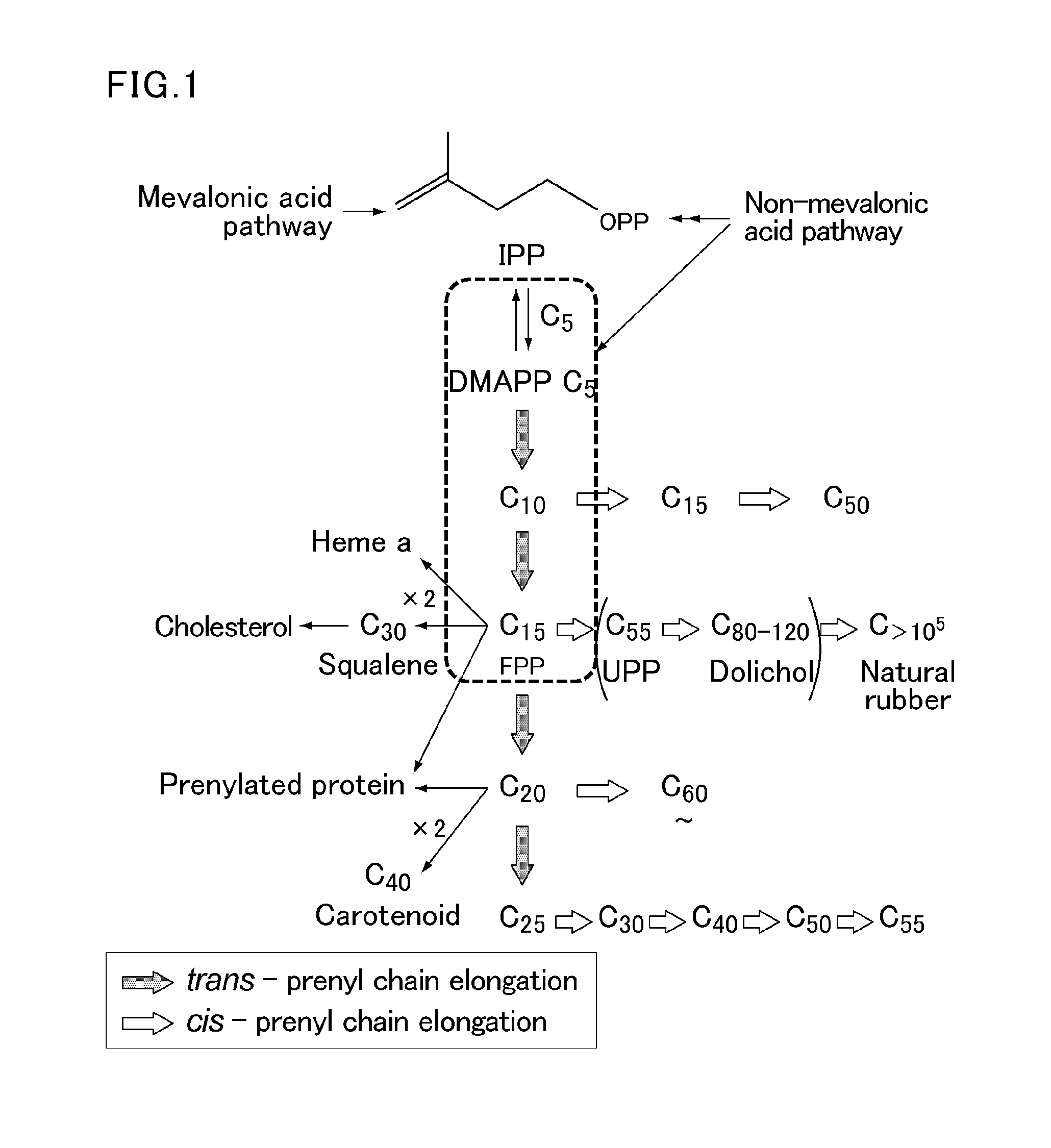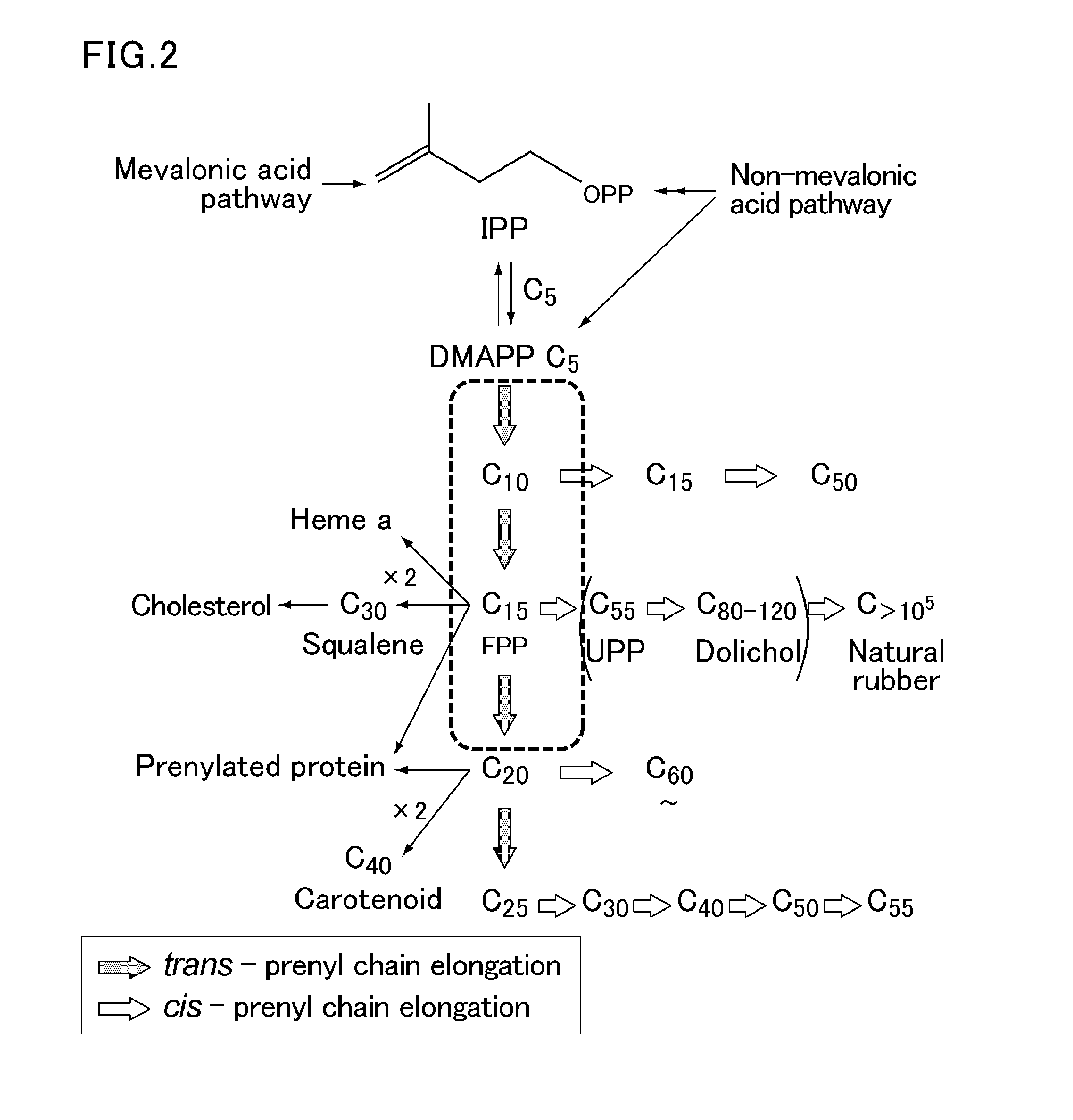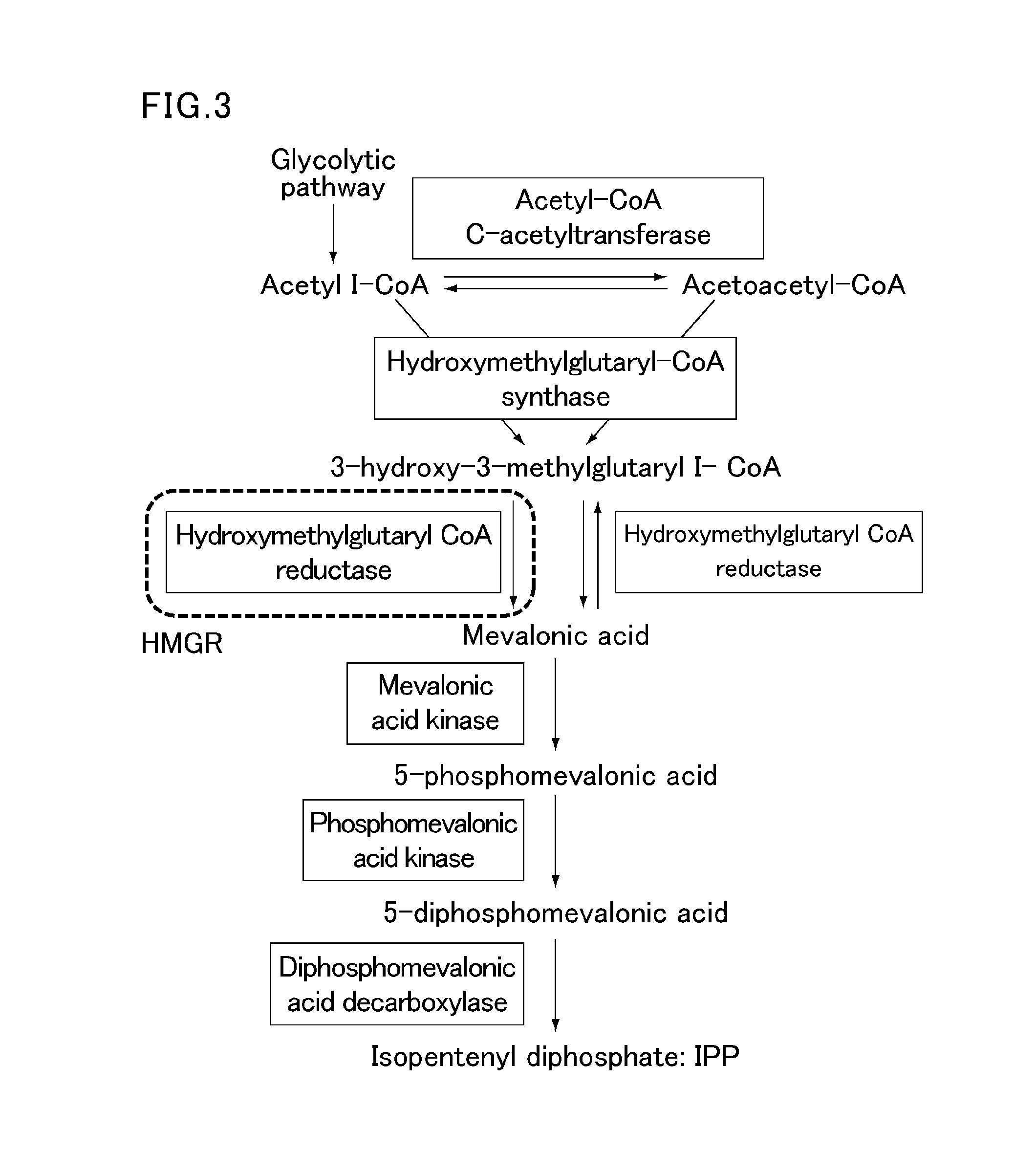Vector comprising specific promoter and gene encoding specific protein, transgenic plant into which the vector has been introduced, and method for improving polyisoprenoid production by introducing the vector into plant
a technology of specific promoter and gene, which is applied in the direction of peptide sources, transferases, enzymology, etc., can solve the problems of limited period during which natural rubber can be extracted and the difficulty of greatly increasing the production of natural rubber using para rubber trees, and achieve the effect of improving the production of polyisoprenoid in the plan
- Summary
- Abstract
- Description
- Claims
- Application Information
AI Technical Summary
Benefits of technology
Problems solved by technology
Method used
Image
Examples
examples
[0217]The present invention will specifically be described with reference to Examples, but the invention is not limited to the Examples.
(Preparation of Base Sequence of Promoter of Gene Encoding MYC1)
[0218]Cloning of a DNA fragment containing a gene encoding MYC1 transcription factor (MYC1) derived from leaves of para rubber tree and its promoter was carried out by the following procedures. First, a genomic DNA was extracted from leaves of para rubber tree. The extraction was carried out by the CTAB method. A gene including the promoter region of the gene encoding MYC1 was amplified by TAIL-PCR using random primers shown as Primers 1 to 2 below and primers corresponding to the gene encoding MYC1.
(Primer 1: SEQ ID NO: 20)5′-CTCTACCAGCTATGATTCACC-3′(Primer 2: SEQ ID NO: 21)5′-TGATATCTTCTGCATGCACC-3′
[0219]As a result of investigation of the base sequence of a DNA fragment obtained using the above-described primers, it was confirmed that the promoter sequence of the gene encoding MYC1 w...
examples 1 to 11
[0257]The chemicals used in Examples are listed below:
NAA: naphthaleneacetic acid;
2,4-D: 2,4-dichlorophenoxyacetic acid;
IBA: indolebutyric acid;
BA: benzyladenine;
KI: kinetin; and
para rubber tree: obtained from the Arboricultural Research Institute of the University of Tokyo Forests, Graduate School of Agricultural and Life Sciences, the University of Tokyo.
(Callus Induction (Induction Step))
[0258]Leaves were collected from the para rubber tree. Then, after the surface of the collected leaves was washed in running water and then with 70% ethanol, they were sterilized with a sodium hypochlorite solution diluted to about 5 to 10% and washed again in running water.
[0259]Next, a tissue of the sterilized leaves was inserted into an induction medium (solid medium) and cultured (induction step). The induction medium was prepared by adding to MS medium (disclosed on pages 20 to 36 of Shokubutsu Saibo Kogaku Nyumon (Introduction to Plant Cell Engineering), Japan Scientific Societies Press) 2,...
PUM
| Property | Measurement | Unit |
|---|---|---|
| pH | aaaaa | aaaaa |
| temperature | aaaaa | aaaaa |
| concentration | aaaaa | aaaaa |
Abstract
Description
Claims
Application Information
 Login to View More
Login to View More - R&D
- Intellectual Property
- Life Sciences
- Materials
- Tech Scout
- Unparalleled Data Quality
- Higher Quality Content
- 60% Fewer Hallucinations
Browse by: Latest US Patents, China's latest patents, Technical Efficacy Thesaurus, Application Domain, Technology Topic, Popular Technical Reports.
© 2025 PatSnap. All rights reserved.Legal|Privacy policy|Modern Slavery Act Transparency Statement|Sitemap|About US| Contact US: help@patsnap.com



